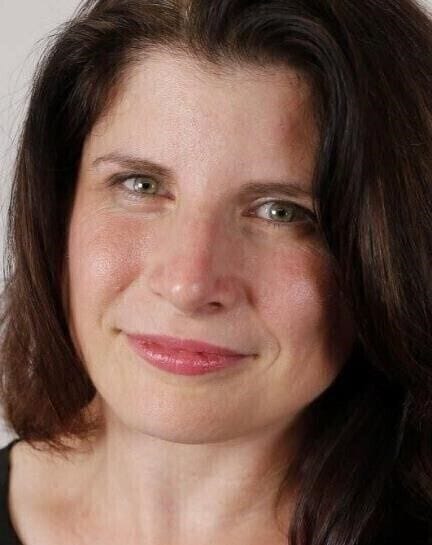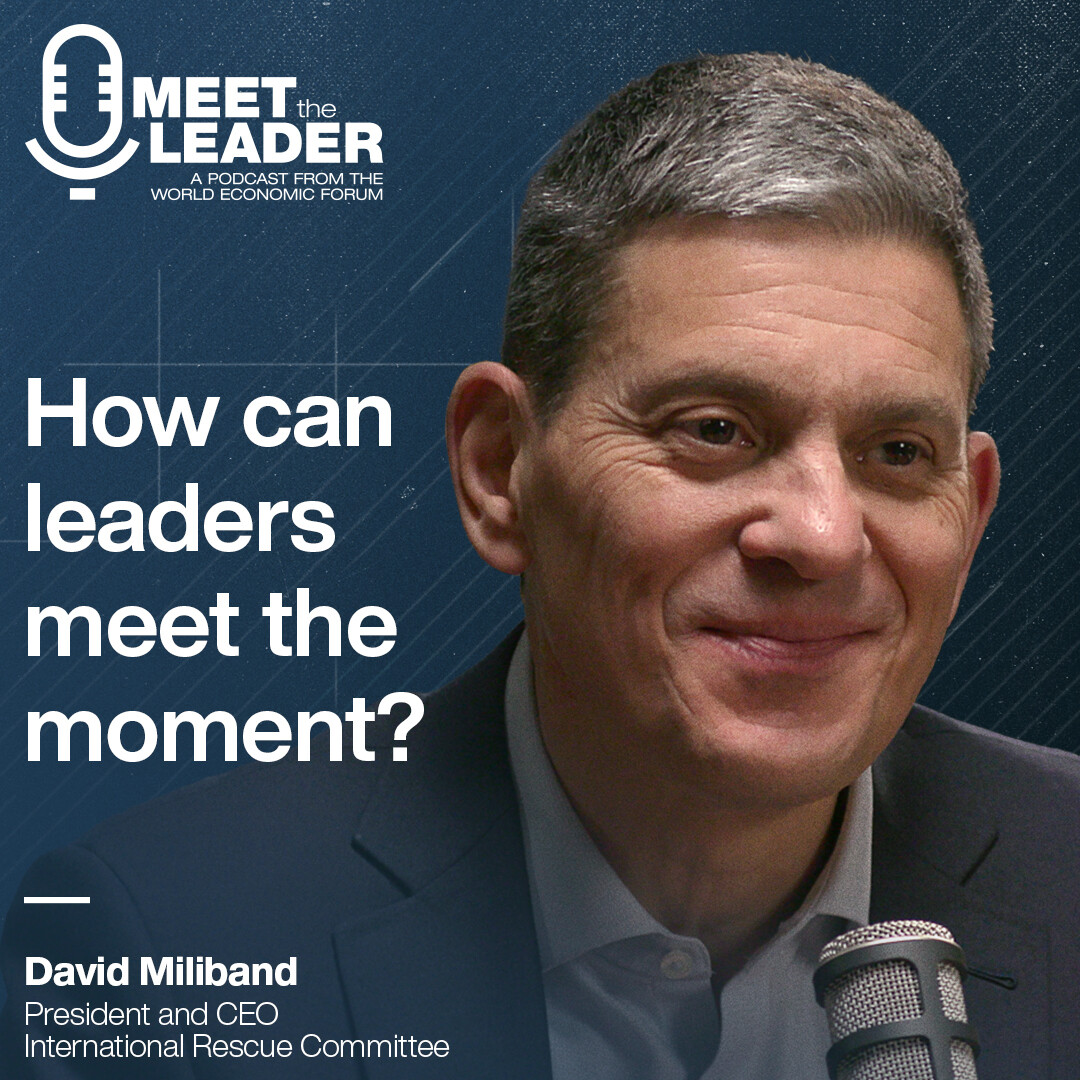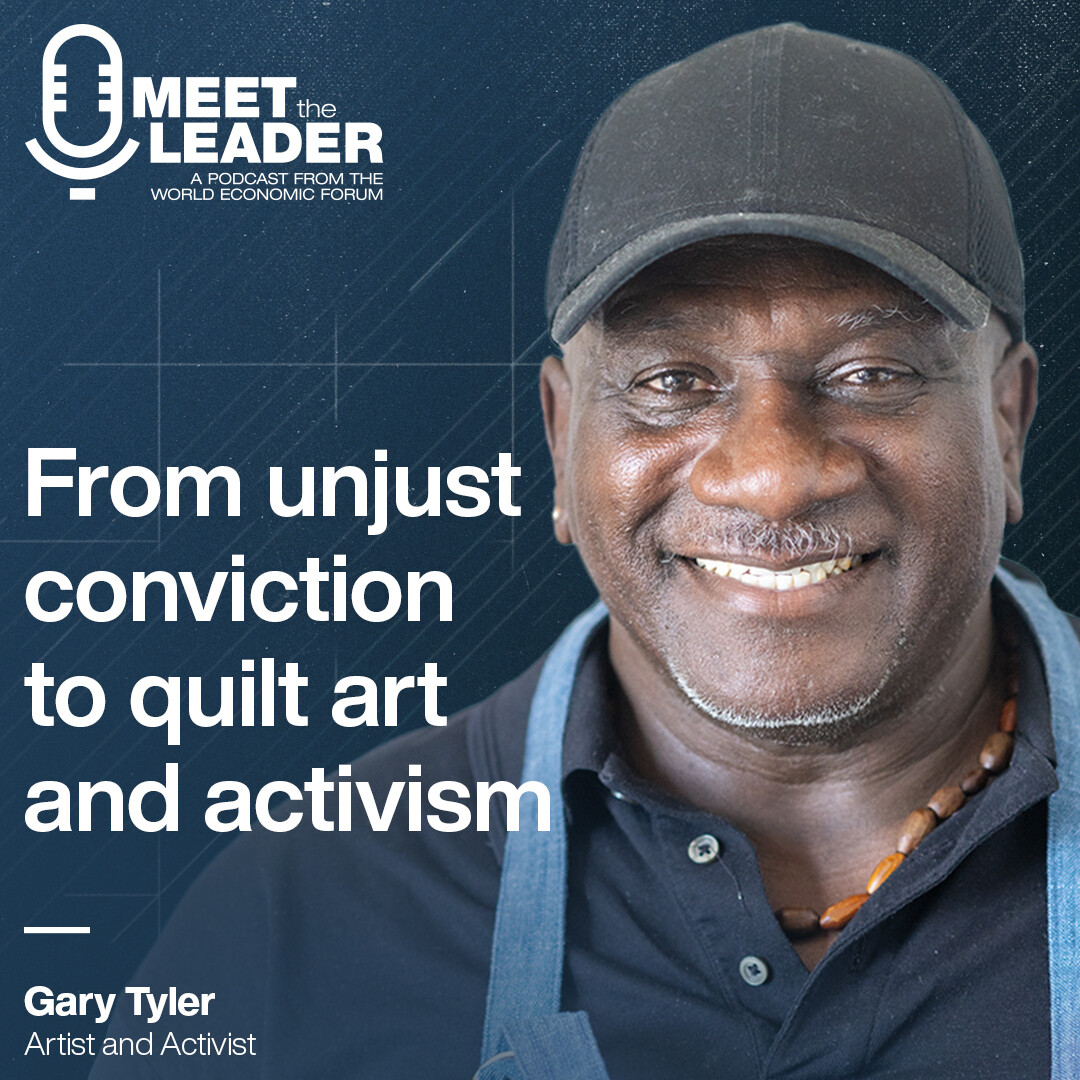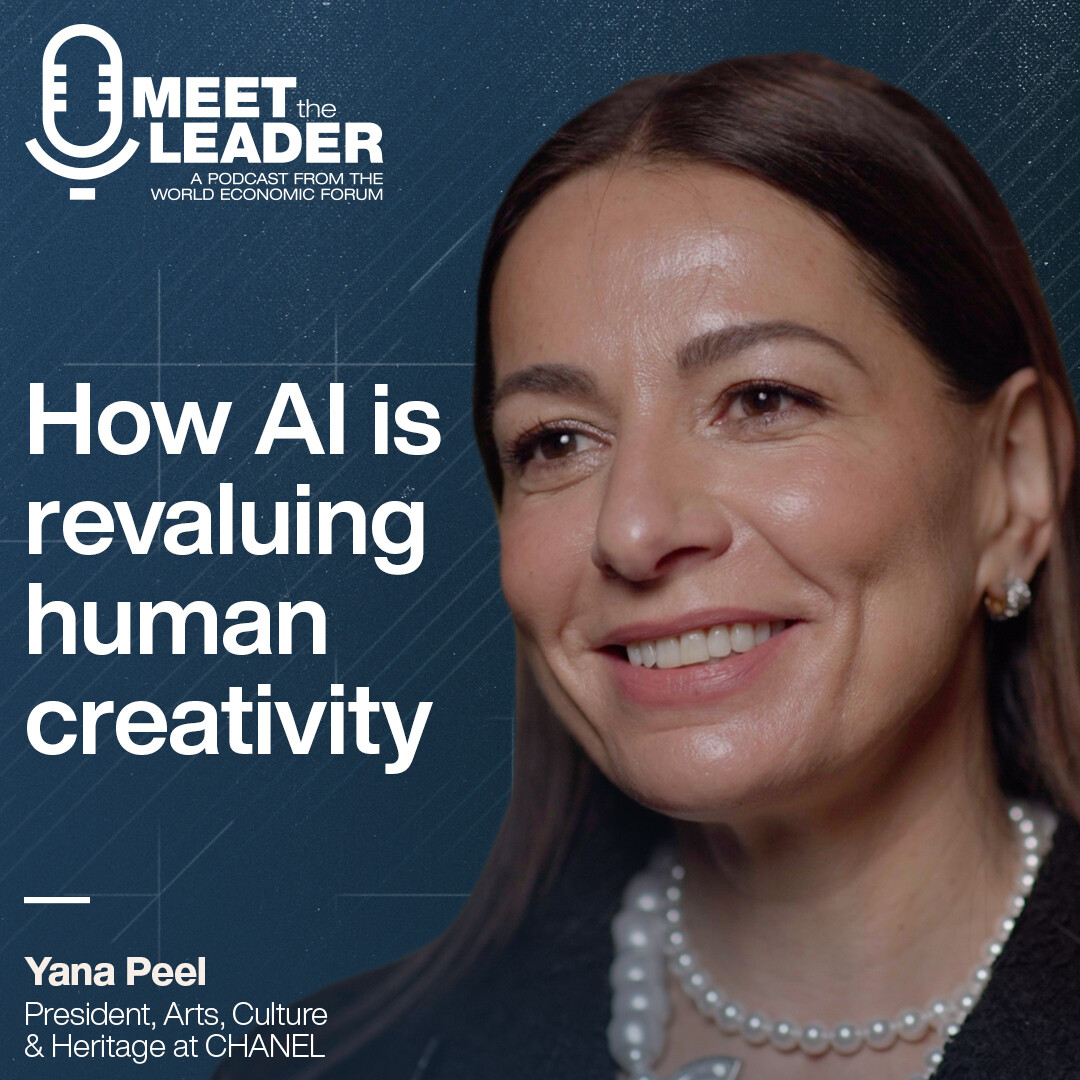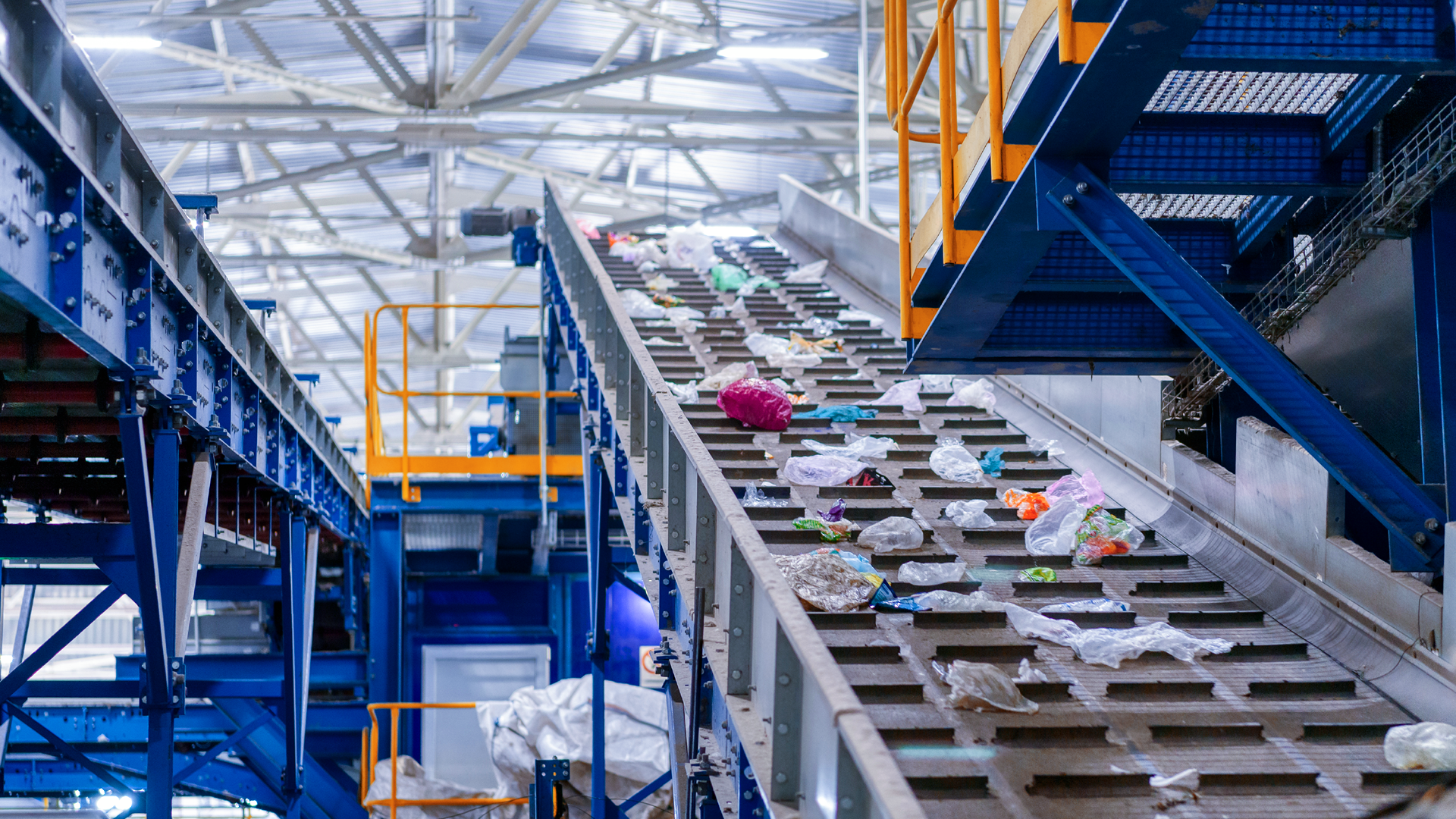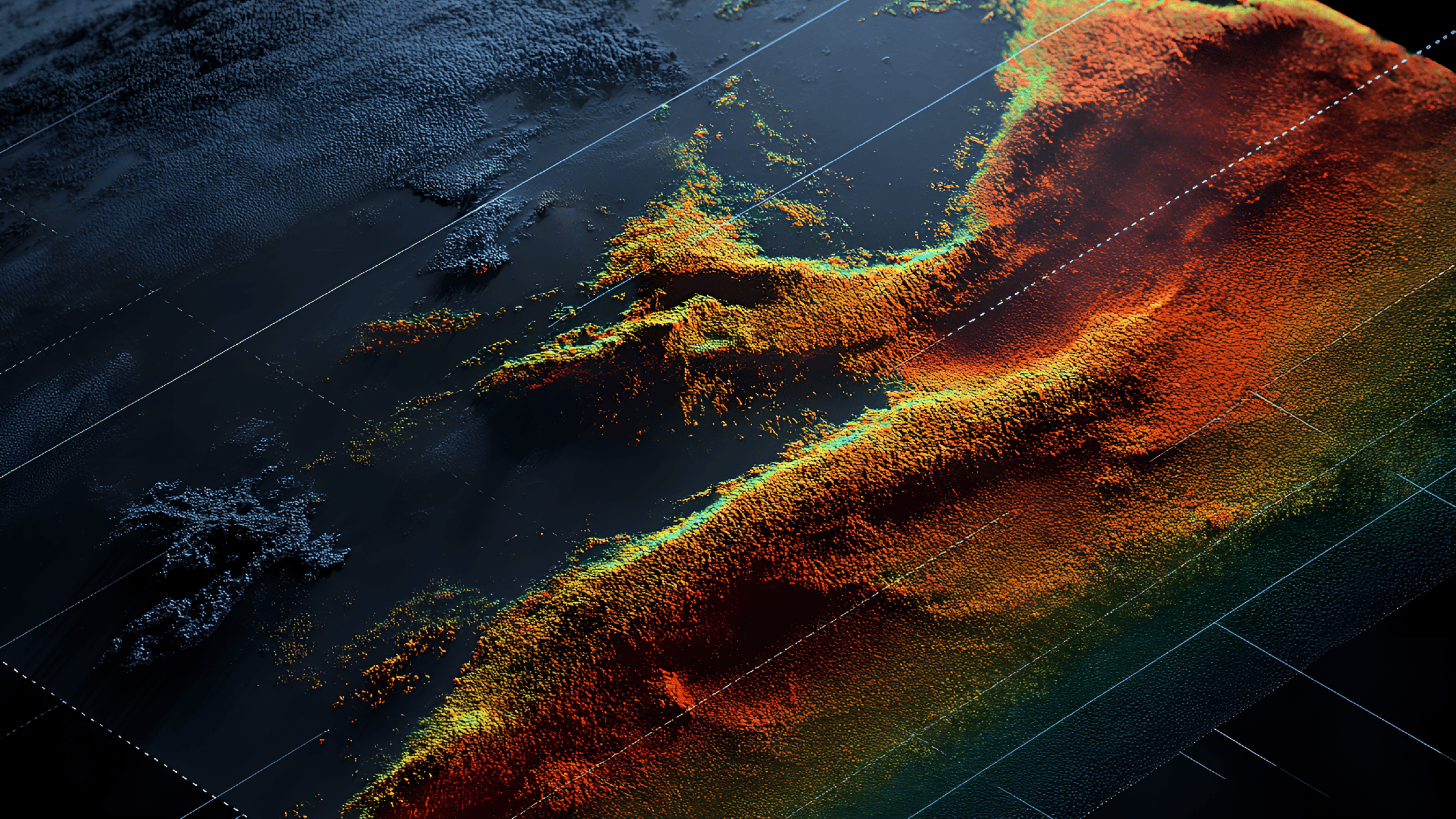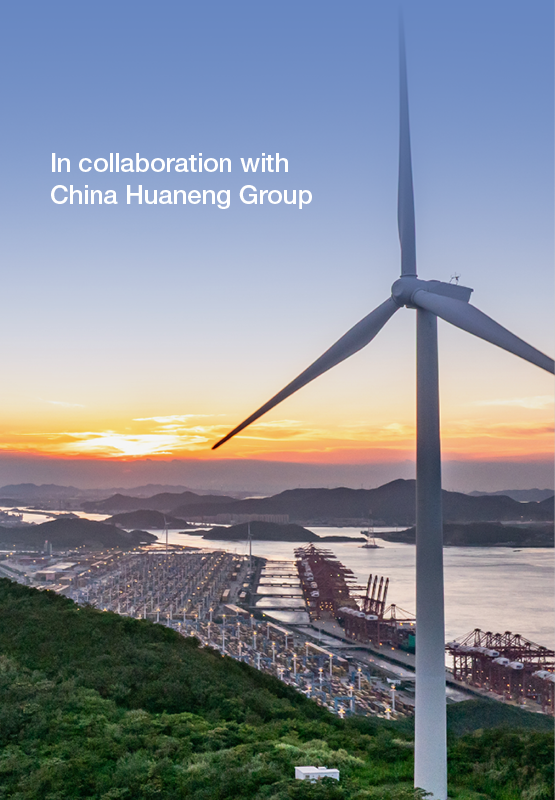How one founder's design background is helping to rethink EV charging in cities
ポッドキャスト・トランスクリプト
Tiya Gordon, It's Electric You have to crack open those doors. You have to push those barriers down to allow for other ideas to then come into practice.
Meet The Leader, Linda Lacina Welcome to Meet the Leader, the podcast where top leaders share how they're tackling the world's toughest challenges.
In today's episode, we talk to entrepreneur Tiya Gordon from It's Electric and she'll share what's needed to drive the energy transition.
Subscribe to Meet the Leader on Apple, Spotify and wherever you get your favorite podcasts. And don't forget to rate and review us.
I'm Linda Lacina. From the World Economic Forum. And this is Meet the Leader.
Tiya Gordon, It's Electric How do we build infrastructure that's going to last? And that's what we're here to do so we can truly make lasting solutions that impact the climate crisis.
Meet The Leader, Linda Lacina If the world is going to hit its emissions goals, things need to change and fast.
We can start with transportation. Transportation in cities makes up 14% of greenhouse gases. Emissions-free options like electric vehicles can speed that change that we need.
Some estimates predict that we could have 240 million electric vehicles on the road by 2040. That includes everything that includes two wheelers and cars and busses. But despite so many advances, one of the biggest and most frustrating barriers standing in the way of our switch to electric is that it's still pretty darn difficult to find a charging station. Tia Gordon has a solution for the 40 million electric vehicles looking for a charge in cities.
She is the founder of It's Electric that is a startup that has designed a special solution that allows buildings to power EVs. This does several things, including create a business model for urban property owners and an incentive for them to get involved. It also creates a scalable model for curbside charging in urban areas.
Her solution can be installed with speed and most importantly, with equity on curbs all around the country.
She'll talk about the moments during the pandemic that inspired her to start It's Electric and how her background in design has given her a special advantage in making this idea a reality.
I should mention we did this interview in my hometown of Detroit, home of the U.S. auto industry, and in the building that hosted some of the most exciting R&D projects of the last century from one of the world's biggest automakers. It's fitting that Tiya and I had our conversation in this place that birthed the last mobility revolution. Now to see what's up ahead.
But enough about that. Let's get started with more about It's Electric.
Tiya Gordon, It's Electric Right now, Electric vehicle charging and cities have been installed in what we're calling the first generation where every single charger for it to function needs to be connected to an electrical source. And so right now, charging company providers are doing it very quote unquote, old school. They're connecting to the utility connection, which is in the road or in the street. This is basically a 12 to 18 month process. It involves trenching seven feet down, installing a transformer to down convert that power, installing a submeter, closing that up and then putting hardware on top that in this country right now, all looks like a gas pump. And this is a huge time barrier and it's a huge cost barrier.
It's Electric addresses this from an entirely different perspective. We, instead of connecting to the utility power, our chargers from buildings, meaning there's capacity in every building, in every city, and that's where we pull the power for our chargers from. So what we do is we just run a small conduit below the sidewalk. Much shorter trench, much shallower trench and a faster process. This allows us to get a charger up in just two days as opposed to, again, sometimes even 12, 16 or 18 months.
Meet The Leader, Linda Lacina And how did this solution come to be? What brought you to realize, hey, there's opportunity here?
Tiya Gordon, It's Electric So we're actually doing this interview from a design college, which is appropriate because my background is design. It's not energy and it's not transportation. So I'm very much considered an outsider. And It's Electric approaches the problem of electric vehicle charging through the method of design thinking. We looked at the problem from the end user and what their experience was, and we tried to solve it for them as opposed to going about it the way that traditional energy or utility companies were installing chargers. And it was really about what's the simplest pathway to create a positive experience for that user.
Meet The Leader, Linda Lacina And what was compelling to you about solving that problem?
Tiya Gordon, It's Electric It's Electric was also born during the pandemic, and I live in New York City, and so New York was very much for the US ground zero for the first wave of COVID19 that came across. I also lived in New York City during 9/11 and during Hurricane Sandy. But for variety reasons, we can all understand, the pandemic was a very difficult time to live through in New York City.
And I started looking into this concept around disaster management. It was a very bleak reading topic for me, but it was one that I dove into during this time. And there is a concept that came up to me in my reading that was called Left of the Boom. The boom is the disaster. And you can either be left of it and you can work to prevent that disaster or you can be right at it after the disaster happens and you can work to mitigate it. Given everything that I lived through with everyone in New York City during the pandemic, it made me realize that our next disaster would be climate based. And I wanted to take everything I had in my experience and work to prevent that next disaster, to work left of that boom.
Meet The Leader, Linda Lacina Given that I'm working left to the boom, in your opinion, was the main step in terms of regulations that cities should take in order to make sure that solutions like yours are more widely adopted?
Tiya Gordon, It's Electric So It's Electric exists to create the easiest pathway for cities to be able to install electric vehicle chargers. We really just want to make things as easy as possible. So all cities need to do is to have a pathway for permitting to put the charger on curbside.
Many cities know what this pathway is. It's called revokable permit or a revokable consent permit. And once they have that permitting pathway understood, once they make sure that it doesn't have to be an arduous process that has to basically require a permit being pulled for every single location where we can build systems, where we can rubber stamp a permit across a variety of different locations, that's how we can scale climate solutions with speed is by finding pathways to regulatory and through government and through private cooperation. So we have true public private partnerships working to solve for climate.
Meet The Leader, Linda Lacina And what are the hurdles or the mindset shifts that that need to be dealt with in order to kind of get to that point?
Tiya Gordon, It's Electric The biggest mindset shift that needs to occur for cities and drivers to be able to adopt electric vehicles is a complete and total change in how we imagine we are quote fueling these vehicles. Charging an electric vehicle is exactly equivalent to plugging in your phone at night before you go to bed. It is not the same as driving to a gas station and pumping in noxious fuels that are stored in tanks below ground for public safety. The beauty of electric vehicles is that you can charge them anywhere. All you need is that socket or that port to be able to plug into.
So once people start to understand this, they'll be less reservation around how am I going to charge my vehicle? Because we'll understand that it's actually much easier. It's much more convenient than it was before. And that's truly what you need when you're looking for behavior change. You want to replicate a behavior that already exists, but you want to make it easier for the user. So in this case, the behavior is not going to the gas station. Behavior is plugging in your phone. Instead of plugging in your phone, you're plugging in your car. It's a big change. It's a big shift. But once you start doing it, you question why you ever did the previous one. And we move forward and we evolve.
Meet The Leader, Linda Lacina How can technology like yours help make electric vehicles more accessible?
Tiya Gordon, It's Electric Technology like It's Electric can help make electric vehicles more accessible by ensuring that everyone can charge. Right now, a lot of people are making that conversion to electric in cities like New York or like Boston or like Chicago. But then I've heard a dozen stories that people have had to sell their electric vehicles because charging is so complicated and people don't want more complexity in their lives. They want things to be simpler. And electric vehicles are simpler. They're actually easier and cheaper to own and to maintain The prices of the actual ownership for electric vehicles are going down. And charging is so much easier than fueling at a gas station, especially when you have that luxury of that home charger.
So It's Electric is working to bring that same convenience, that same affordability of charging by plugging in in your garage, if you have a garage, to everyone that lives in the city. Imagine being able to fill up your gas tank for $8.
Meet The Leader, Linda Lacina If this is scaled over the next decade, how would a city be different? How would people's lives be different?
Tiya Gordon, It's Electric In ten years, cities will be transformed in a major way, but in an invisible way. I like to think about fire hydrants and how ubiquitous and how invisible they are, but how critical they are to the safety and well-being of cities. And for me, the same way that we're working to bring at It's Electric electric vehicle charging to curbside, that is almost for me, synonymous with the fire hydrant. And I want the next generation of children that are growing up in cities to find an electric vehicle charger that's sitting on curbside as normal as the children of today find a fire hydrant. It's just a new piece of public works that's invented to provide an amenity to the hundreds of millions of people that live in cities across this world.
Meet The Leader, Linda Lacina So much of the change that we need to do has to do with maybe rethinking how we perceive infrastructure. With this, you know, what do you think is going to be most helpful for electricity? It's a utility we're all familiar with, but we're going to need to be using it in new ways. What do you think is needed next?
Tiya Gordon, It's Electric So it's so interesting. I love thinking about questions around infrastructure because it's the word that you constantly hear the most around the challenges that we face for electrification. But the beauty of It's Electric is the building density in cities that creates the barrier for every other charging company, for us is the solution, because every building can power an electric vehicle charger. The buildings are already the infrastructure.
Meet The Leader, Linda Lacina What kind of impact stories can you share already? Just to kind of give us a sense of the change that we could see in a little microcosm?
Tiya Gordon, It's Electric I'd love to tell you this on a macro level and on a micro level.
On a micro level, the impact that we can see is just from the small scale pilot that we first started with in Brooklyn, New York. We were able to deploy six chargers in what was not only a mass transit desert, but a charging desert, allowing 16 drivers to be able to easily charge electric vehicles in Sunset Park, Brooklyn, and in the Navy Yard in Brooklyn, New York.
On a macro scale, how do you take an idea that looks good on paper? Maybe it gets a lot of attention. Maybe it wins an award. But how do you test that in the real world, in a city such as New York that's notoriously hard to crack open?
So what we do is we approach the New York City Economic Development Corporation and we said, hey, you guys are progressive. You're the agency that really gets things moving in this city. Can we test our hardware on a city asset? And we were shocked because they said yes. So not only did we work with the New York City Economic Development Corporation, and not only do we then also work in cities like Detroit with the Michigan Economic Development Corporation to test hardware that's designed to help reduce the climate crisis or the impacts of the climate crisis. But our trial, our pilot was so successful in New York City that we passed an invisible bar we didn't know was there. And from that, the New York City Economic Development Corporation just launched [September 2023], a program called the Climate Innovation Pilot Program, or now they are inviting climate tech startups to use city assets to test solutions. And these are the public private partnerships that are possible. You have to crack open those doors. You have to push those barriers down to allow for other ideas to then come into practice.
Meet The Leader, Linda Lacina What impact would you hope to have maybe a decade from now.
Tiya Gordon, It's Electric In a decade from now I never want to hear that it's difficult to charge an electric vehicle. If in 2030 or 2035, when we know states like New York and California have banned the sales of internal combustion engines, and we're still reading headlines that it's difficult to charge an electric vehicle, then everyone in my industry has failed. I want to make sure that we never see that headline again in as soon as 5 or 6 years from now.
Meet The Leader, Linda Lacina You have a design background. How has that helped you in this work?
Tiya Gordon, It's Electric It's allowed me to be incredibly clear about my objectives. I'm not tied down to how things should be done and it has allowed me to kind of break a lot of barriers or to use a term that is often used in my space to disrupt a category that itself is not that old but is ripe for change.
Meet The Leader, Linda Lacina What did you think you were going to be using that design background for?
Tiya Gordon, It's Electric I was using my design background to build public facing technology. So my background before founding It's Electric with my partner was any kind of hardware and software interface that you would encounter in a public space, in a museum, in a government building, in a train station. But this is going back for 15 and 20 years. So in a time before we all had iPads and iPhones, trying to understand how to build hardware that would be used by tens of millions of users on a monthly or yearly basis and have it not break.
So that's where I really cut my teeth and that's where I was able to bring that knowledge of how to build hardware for public space into EV charging. And so even on our website it says, you know, we remove the big, the bad and the ugly. We've taken everything off of EV chargers that's prone to break. How do we build infrastructure that's going to last? And that's what we're here to do so we can truly make lasting solutions that impact the climate crisis.
Meet The Leader, Linda Lacina Having a design background and attending a design school and being in that sort of environment, does it also sort of help you be a little bit more inclined to experiment and sort of move off of an idea if it doesn't serve you any more? What are your thoughts on that?
Tiya Gordon, It's Electric Absolutely. The best part of this entire journey that we've been on, it's been so fast and we've achieved so much, has been the fact that I have this entire network that works across every possible discipline in design, from architecture to branding to industrial. And I've pulled in experts from every single area to help solve this problem. And everyone has jumped in with both feet because we see the urgency and we see that design is needed to help solve this problem. So design needs definitely to be celebrated as a way to help solve problems when perhaps more traditional methods have failed.
Meet The Leader, Linda Lacina Is there a way that you have sort of changed as a leader, something that maybe you do now that maybe you wouldn't have done at the beginning because it wouldn't have occurred to you?
Tiya Gordon, It's Electric Ways that I've changed as a leader has been to be incredibly bullish because of the fact that we actually don't have a lot of time. I think that everyone feels like we're in a very comfortable space. Global warming. You know, maybe it feels like a nice warm bathtub that we're slowly leaning back into, but it's a horrific end game if we don't make an impact immediately.
There's incredible article that came out in a major publication that said "the heat will kill you first." And having lived in New York through all sorts of different changes, we're not prepared for massive heat waves. Our infrastructure is not prepared. Our citizenry is not prepared. We can begin the steps we need to mitigate climate change to help control this. But we need to be bullish. We can't be shy. We can't be slow. We need to try things. We need to try things and fail. But we know to at least we've tried these pathways and if those don't work, we need to move on to find those more immediate solutions.
We can't be shy. We can't be slow. We need to try things. We need to try things and fail.
”I like to say that we don't want to basically wait ten years and say, okay, well, we're going to wait till everything is perfect. We're going to wait for technology that doesn't exist. I've had conversations with people who have been a little bit pushy with me and they've said, Well, I'm not sure about your solution because what if someone else invents a machine that just sucks all the carbon out of the atmosphere in two years? And I said, Well, that would be great. But what if they don't? What can we do now with the infrastructure we have now, with the technology we have now and with the talent we have now to not put ourselves in a wait and see condition. We have the tools. We have everything we need to make these changes happen, and we need to do it with immediacy.
We have the tools. We have everything we need to make these changes happen, and we need to do it with immediacy.
”Meet The Leader, Linda Lacina If you recall, we talked a little bit about how cities can be a little bit more open to new solutions and experimentation and things like what do you think they should be focused on to kind of do a little baby step to get us to the big goal?
Tiya Gordon, It's Electric Absolutely. I mean, no one can hit the big goals right away. That's going to be impossible. But you need to set those steps towards that big goal. So, for example, in New York, right, if we're going to have all new vehicle sales by 2035 be electric, we have interim steps that get us there. So we need to anticipate. So let's say that means that in 2026, we're going to have anywhere between 1 to 200,000 more electric vehicles on the road. We need to anticipate where those drivers are going to be driving, where those drivers are going to be parking. And we need to ensure that that infrastructure is there in advance. I'd like to say it's not chicken or egg. It's all egg. No one can convert to an electric vehicle if they can't see where they're going to charge. So city leaders need to set interim milestones and then work with their incredibly talented, incredibly brilliant teams in city government, in nonprofit, in regulatory, in everything else that supports these ecosystems to help hit those milestones.
It's not chicken or egg. It's all egg. No one can convert to an electric vehicle if they can't see where they're going to charge
”Meet The Leader, Linda Lacina As a founder of a brand new initiative, a brand new startup, there are times where you probably have no idea what will be the next step. You hit a wall. What's one of those so we have a sense for what it's like to be in your shoes?
Tiya Gordon, It's Electric Challenges they face as a founder are numerous, and they come at me fast every single day. What I have learned and what we need to do is we need to put aside perfection in exchange for good.
So, for example, we're doing a mapping exercise to help rideshare drivers -- who all need to go electric based on the two major rideshare companies in the United States, Uber and Lyft, by 2030 -- we're doing mapping exercises at It's Electric to understand those density populations and where we could deploy chargers in areas that would service these drivers in the greatest way possible, in the fastest way possible.
There's amazing softwares that are out there, and there's all of these incredible tools and there's also processes that take some time, 6 to 12 months, to create these incredibly precise data and visualization maps. And that would be lovely. And I would love to have that product and I would love to write a white paper and I would love to do all of these incredible things. But we don't want to take 6 or 12 months to write this paper with these incredible visuals. What we want to do is we want to create maps. We want to share that information as quickly as we possibly can. We want to get feedback on it. We want to refine it. We want to start going out into these neighborhoods and understanding the appetite and the support of having electric vehicle chargers in these neighborhoods. And that just comes down to speed. So you need to basically put aside what would be the most ideal, the shiniest and the prettiest way of doing some things, in favor of what can be faster and a little bit uglier that gets the job done in a faster way.
Meet The Leader, Linda Lacina Is there a book you recommend?
Tiya Gordon, It's Electric Wow. Yeah. So I talked about Left of the Boom. So one of the books that I've read numerous times, that is where Left of the Boom comes from, is a book called The Devil Never Sleeps. And it's how we're Living in a Time of endless Disaster. And I began reading this book right before Russia invaded Ukraine. And it's true that we are living in a period of time where it's going to be endless disaster. That's going to be a combination of man rot and climate rot. And so how do we work forward to prevent this? And I can't fix the man side, but I can fix the climate side.
Meet The Leader, Linda Lacina What would somebody take from that book if they read it.
Tiya Gordon, It's Electric They would understand, hopefully, what I did. That there's two positions you can take, either the before or the after. And in both cases, the author really kind of lays out how she put forward plans for both the before and the after during her work, I believe she was part of the Obama administration, to mitigate or to prevent. And these are the two mindsets we need to be in right now. If anyone's working even close to the climate space is, you're either working to mitigate after it happens and you need to have your plan, your plan B, your plan C, or you're working to prevent. And then how do you get there fastest?
Meet The Leader, Linda Lacina Is there a piece of advice that you've always been grateful for?
Tiya Gordon, It's Electric Yes. One of my very first jobs, I had an incredible, incredible supervisor and she told me to stop making so many jokes. But I actually took that advice and then didn't take that advice because I think that we live in a time when if you don't lighten up the situation, it can be just too much. And so if we can laugh a little bit as we're working to find these solutions, I think it can help us together to be more human In what we set out to do and what we set out to achieve and what we can achieve together.
Tiya Gordon, It's Electric That was Tiya Gordon to learn more about electric vehicles check out our latest report, Scaling Investment in Electric Vehicle Infrastructure in Cities. Learn how cities like London and Oslo are making it easier to go electric.
A transcript of this episode and my colleague's podcast or Radio Davos are all available online. Just check out with that wef.ch/podcasts.
This episode of Meet the Leader was produced and presented by me with Jere Johansson and Taz Kelleher ad editor, Yves Schaffner as a studio engineer in Detroit, and Gareth Nolan driving studio production. That's it for now. I'm Linda Lacina with the World Economic Forum. Have a great day.
After the pandemic, Tiya Gordon realized the next global crisis would be climate based. To that end, she’s co-founded It’s Electric, a curbside solution that takes power from buildings, sidestepping the currently time-consuming permitting and installation process that slows the growth of charging stations in cities around the world. She shares how her design background has helped her be clear-eyed on objectives, identify fresh approaches and break down stubborn barriers, all to speed the change needed for the energy transition.
その他のエピソード:
「フォーラム・ストーリー」ニュースレター ウィークリー
世界の課題を読み解くインサイトと分析を、毎週配信。
